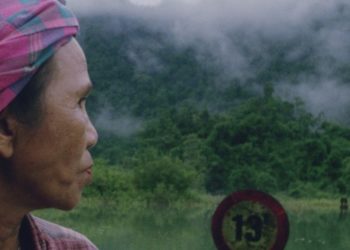Eva Krook stood inside a canal mansion in Amsterdam last year, nervously awaiting news about a lost Tyrannosaurus rex.
Krook had received a phone call from Italy informing her that there had been a mix-up with four crates in which the giant fossil replica had been packed for shipping to her new museum. The massive tail, rib cage, pelvic bone and limbs had all arrived, but when she opened up the fourth crate it was empty, save for a few scattered wood shavings. The T. rex’s skull was missing.
This was one of the hiccups in setting up the Art Zoo, an ambitious new museum that opened to the public in the center of Amsterdam last month. Situated in a 17th-century mansion in the city’s canal district, the museum brings together natural history and contemporary taxidermy created by two Dutch artists who call themselves Darwin, Sinke & van Tongeren.
Krook, the museum’s director, said the T. rex wasn’t her only logistical problem. She also had to figure out how to get a giant gorilla, made of 78 yards of denim, through the building’s long and narrow front doors.
“This is a landmark building, so it’s not like we can just break a door to fit it in,” she said. “I joked that I felt like I was visiting the gynecologist, because we’re always trying to figure out how to get the baby out — or in this case, in.”
The T. rex and the denim gorilla are just two of more than 200 extraordinary objects now on show at the Art Zoo. The museum was created by Ferry van Tongeren and Jaap Sinke, a Haarlem, Netherlands-based artistic duo behind Darwin, Sinke & van Tongeren.
Van Tongeren and Sinke trained as artists, but went into advertising after graduation. In 2005 Van Tongeren sold his agency, planning to retire, but instead teamed up with Sinke to follow a dream. The two became what they call “fine taxidermy” artists and set up a company that they named after themselves, as well as the evolutionary theorist Charles Darwin, a major source of inspiration.
For the Art Zoo, they brought together some of their existing taxidermy works, along with hundreds of new ones they made especially for the museum. They also collected fossils, shells, cages and display cases, and they also assembled other curious objects to complement the animals.
In the entry hall, a 16-foot crocodile hangs from the ceiling, bound in red ropes. In the foyer, tropical birds with bright blue and green wings cling to dozens of antique bird cages.
On one wall of the living room hangs a wreath made of entangled lethal snakes: cobras, pythons and a black mamba. A leopard crouches in an antique furnace, and spotted ostrich chicks make a nest in a conch shell. The leg of a mammoth stands like a pillar nearby.
This eclectic museum came together over approximately two years. Peter van Duinen, the director of the Vrije Academie, an educational institution that leases the building, had used two floors for temporary art exhibitions, but he wanted something more permanent. He worked with Krook, his wife, to find the right people for the job.
The mansion is known as the Cromhouthuizen, after its original owner, Jacob Cromhout, a merchant and regent, or member of the city’s governing class. It has been preserved for centuries in near-perfect condition, with its original marble floors and baroque ceiling frescos, and was previously home to the Bible Museum.
Sinke and van Tongeren take inspiration for their taxidermy work from 17th-century Dutch and Flemish still-life paintings, which often included exotic animals depicted in dramatic postures.
“It’s all about poses,” van Tongeren said in an interview, adding that he likes to reference early anatomical drawings by artists such as Andreas Vesalius and Leonardo da Vinci that presented their flayed subjects as if they were alive, moving and sometimes even dancing.
He and Sinke also borrowed from the concept of the cabinet of curiosities: artful collections of exotic objects, fossils, shells and dead animals that were popular among artists and scientists of Enlightenment-era Europe and were the predecessors of modern museums.
In a former kitchen downstairs, van Tongeren and Sinke have transformed the room into a place called “Darwin’s Workshop.” Surrounding a 19th-century papier-mâché reproduction of a gorilla’s muscles are various objects, such as giant crabs, speckled shells and lizards emerging from glass beakers. It appears to be a scientific laboratory, filled with anatomical drawings and plaster busts of Charles Darwin’s head.
“They focus on the idea of the ‘Gesamtkunstwerk,’” a concept in which everything in the space, including the furniture and the artworks, “adds up to one tableau vivant,” Krook said. “Each room has a dialogue between the architecture and the art, so that the whole is greater than its parts.”
Sinke said that none of the animals in the Art Zoo were killed for the purposes of taxidermy. As a sign in the entryway explains: “All died of natural causes, under the care of zoos and breeders.” Even the extremely rare species on show — a giant anteater, a Brazilian pygmy owl and a Persian leopard — were all acquired as road kill or corpses, Sinke added.
The giraffe skeleton in the atrium is real, as is the mammoth leg in the living room, van Duinen said, but the T. rex replica was made from an original 66-million-year-old fossil found in the Black Hills of South Dakota and that was exhibited for some time in the Naturalis Biodiversity Center in Leiden, the Netherlands, where it was named Stan.
It took Krook three months to locate the missing replica of Stan’s skull last winter, but finally, after several phone calls, she located it in a storage facility in the south of Holland. Van Tongeren drove down to retrieve it, and brought the remaining piece of the T. rex to Amsterdam in his van.
The post The Curious Animals of Amsterdam’s Art Zoo appeared first on New York Times.




